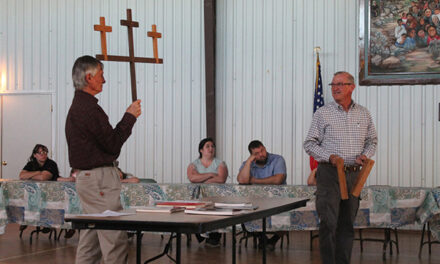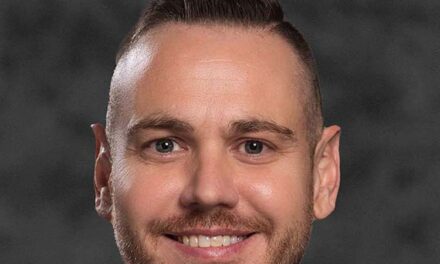BELEN—Through the alchemy of steel heated to unbearable temperatures and then beaten into a usable or pleasing shape, Robert Ulibarri works.
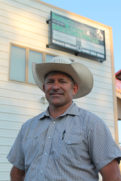
Julia M. Dendinger | News-Bulletin photo
Robert Ulibarri has deep family roots in Belen and hopes to pass on his love of blacksmithing and metal working to his son.
Hammer blows rain down as he turns the piece; what was once a plain, straight piece of metal begins to twist and turn.
His interest in metal working, welding and blacksmithing goes back to childhood, as his father, a welder and builder, taught him.
“It was a lot of what I was exposed to, just a lot of hands-on construction and welding,” Ulibarri says.
As he got older and into high school, those were the classes he was drawn to and succeeded in.
“I was just interested in the producing and working,” Ulibarri said. “It’s always been a passion of mine to be outside and to work with my hands and to create.”
Following that interest gave him motivation during college, he said, to continue to learn and hone his skills.
After getting an agriculture degree from New Mexico State University, Ulibarri worked in a variety of careers, from ranch manager to the forest service. One thing was always the same, no matter what.
“I always had a shop; I had my truck and tools,” the Belen High School graduate said.
While his family has deep roots in the Hub City, Ulibarri has lived and worked across the western U.S. — California, Colorado, Arizona, Texas. He spent 15 years as a welding instructor at Central New Mexico Community College, a way to give back and educate the next generation.
“The highlight of my teaching experience was to bring this kind of information to them,” he said of his welding and metallurgy classes. “It was really cool and I had a lot of fun with it and I still do, just not on so much of a regular basis.”
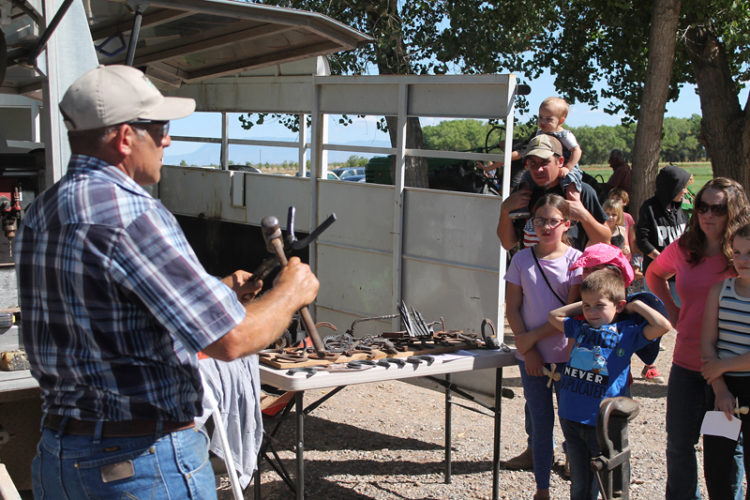
Julia M. Dendinger | News-Bulletin photo Explaining how he shapes a straight piece of metal into a finished product, blacksmith and farrier Robert Ulibarri demonstrates his skills to a crowd at last year’s Rio Grande Heritage Festival.
When he isn’t busy with his full-time job as a certified welding inspector, Ulibarri does blacksmithing demonstrations at events, such as last year’s Rio Grande Heritage Festival at the Los Lunas Science Center.
Like many trades, welders and blacksmiths have professional societies that hold clinics and demonstrations around the country and world, he said. Through these events, Ulibarri says he’s able to surround himself with other people who are just as passionate as he is about the work.
“Sometimes we volunteer to demonstrate for each other, have work nights where we’ll build things together,” he said. “There’s a lot of exchanging of ideas and the philosophy of doing things.”
Most people have a favorite athlete or writer. Ulibarri has favorite blacksmiths, like world renowned craftsman Jim Keith.
“I just watch the effortlessness of their motions and the production. It just falls off of the anvil just like rain,” he said. “I’ve watched Jim Keith work, the harmony of his movements … it was like a song just watching him work.”
The father to a 5-year-old son, Ulibarri wants to teach him the ways of metalworking, hoping he will enjoy the process of doing and making as much as he does.
Working to solve a problem, getting better at his craft, gives him a lot of satisfaction and a sense of accomplishment.
“Knowing you’ve worked hard, when you’ve done it to the best of your ability,” he said. “You shouldn’t be afraid of it, right?”
While teaching, Ulibarri would see students become frustrated while learning a new skill or technique, disappointed their work wasn’t as quick or smooth as his. He always made a point to remind them that learning takes time, sometimes even a lifetime.
“You do not know how many rods I’ve burned to get to this point,” he said with a laugh.
When a blacksmith walks into another practitioner’s shop, for the most part, they ignore the front of the operation. They go out back and take a look. They look at the piles of discards, the mountains of used horseshoes they’ve pulled off.
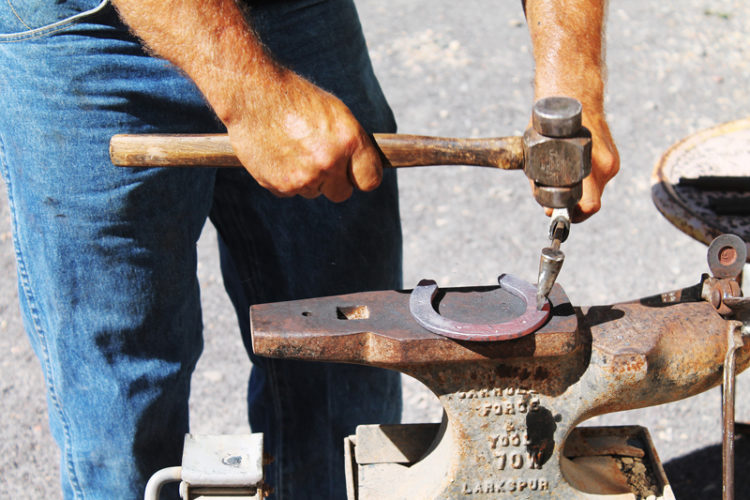
Julia M. Dendinger | News-Bulletin photo
Local blacksmith and farrier Robert Ulibarri puts the finishing touches on a nail hole in a horseshoe.
“A lot of times, what we say is that it takes a lifetime to be a blacksmith but then it takes another lifetime to perfect it,” Ulibarri said. “For me, something might take 150 blows but for someone like Jim Keith, it would take 50.
“I watch and I see it and I understand it, but to be able to produce it takes a tremendous amount of effort and time. That is something I think we miss a lot in society — apprenticeship and patience, to take ownership of what we do.”
A blacksmith, farrier and welder, Ulibarri has been able to make a living for himself, practicing a craft he loves. That is advice he tries to pass on to his students.
“Go into what we do without the idea of monetary compensation because once you do something you enjoy, and that takes skill, the money will come,” he said. “Don’t be chasing that dog.”
Blacksmithing is a craft unlike most, Ulibarri says. Like other artists and artisans, there are items that aren’t “show quality,” as he puts it, but the art of hammer and anvil has more brutal physicality than others.
“People watch me work and are like, ‘Why do you do that?’ Because your body is completely drenched in sweat, you’re bleeding,” Ulibarri said. “I’m used to boxing; I was a football player. I like the pressure. It’s a personality thing, you know?”
Julia M. Dendinger began working at the VCNB in 2006. She covers Valencia County government, Belen Consolidated Schools and the village of Bosque Farms. She is a member of the Society of Professional Journalists Rio Grande chapter’s board of directors.



